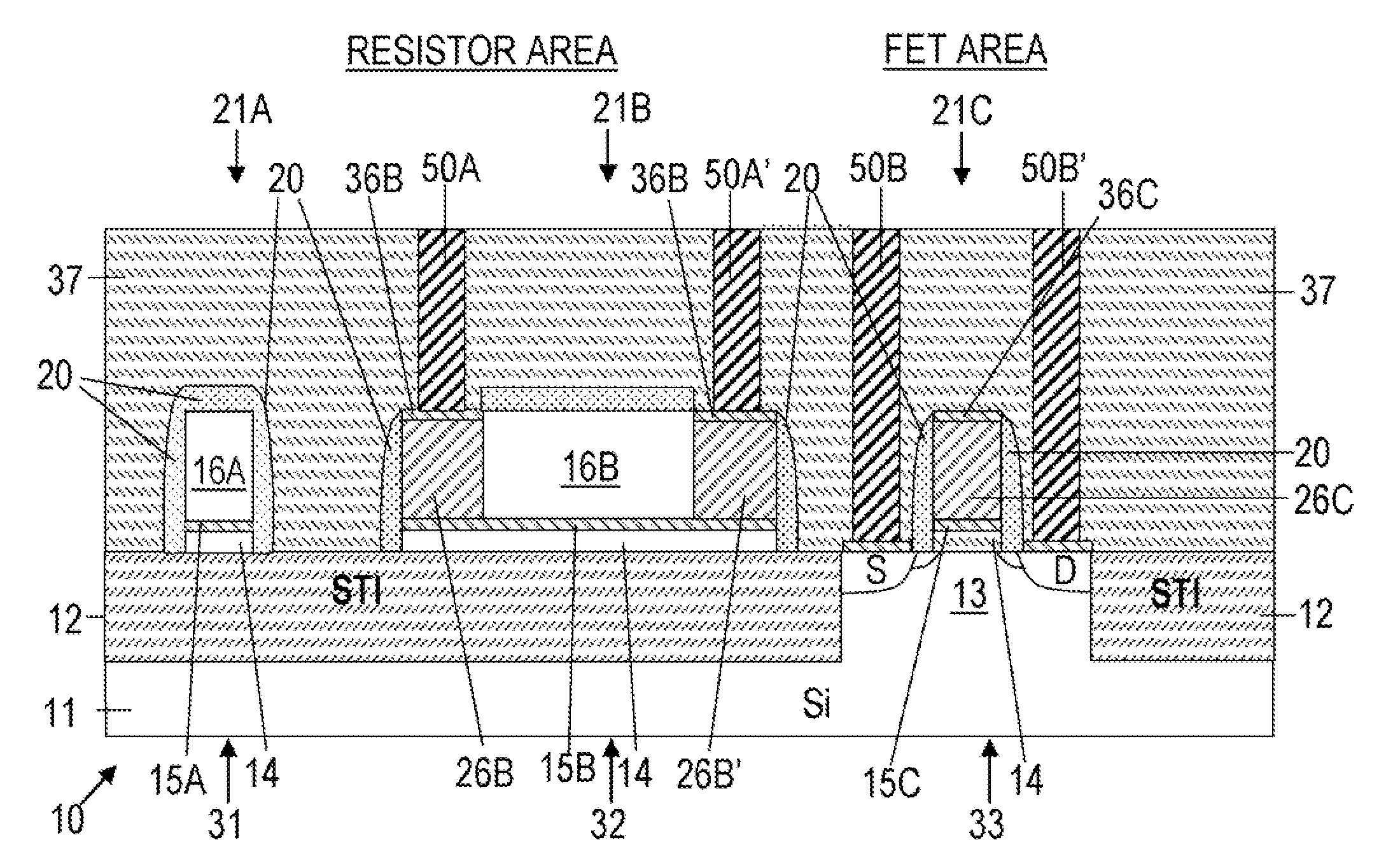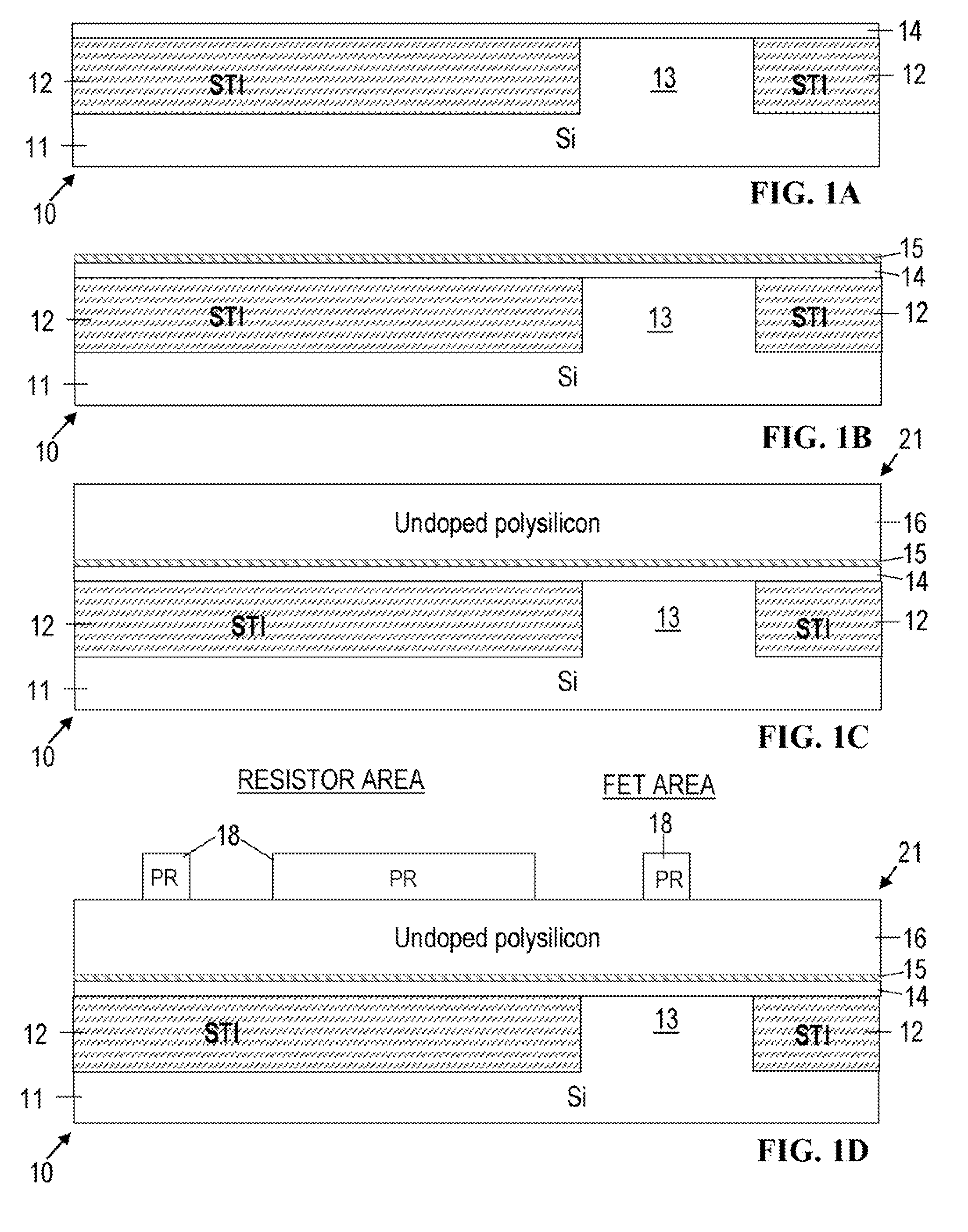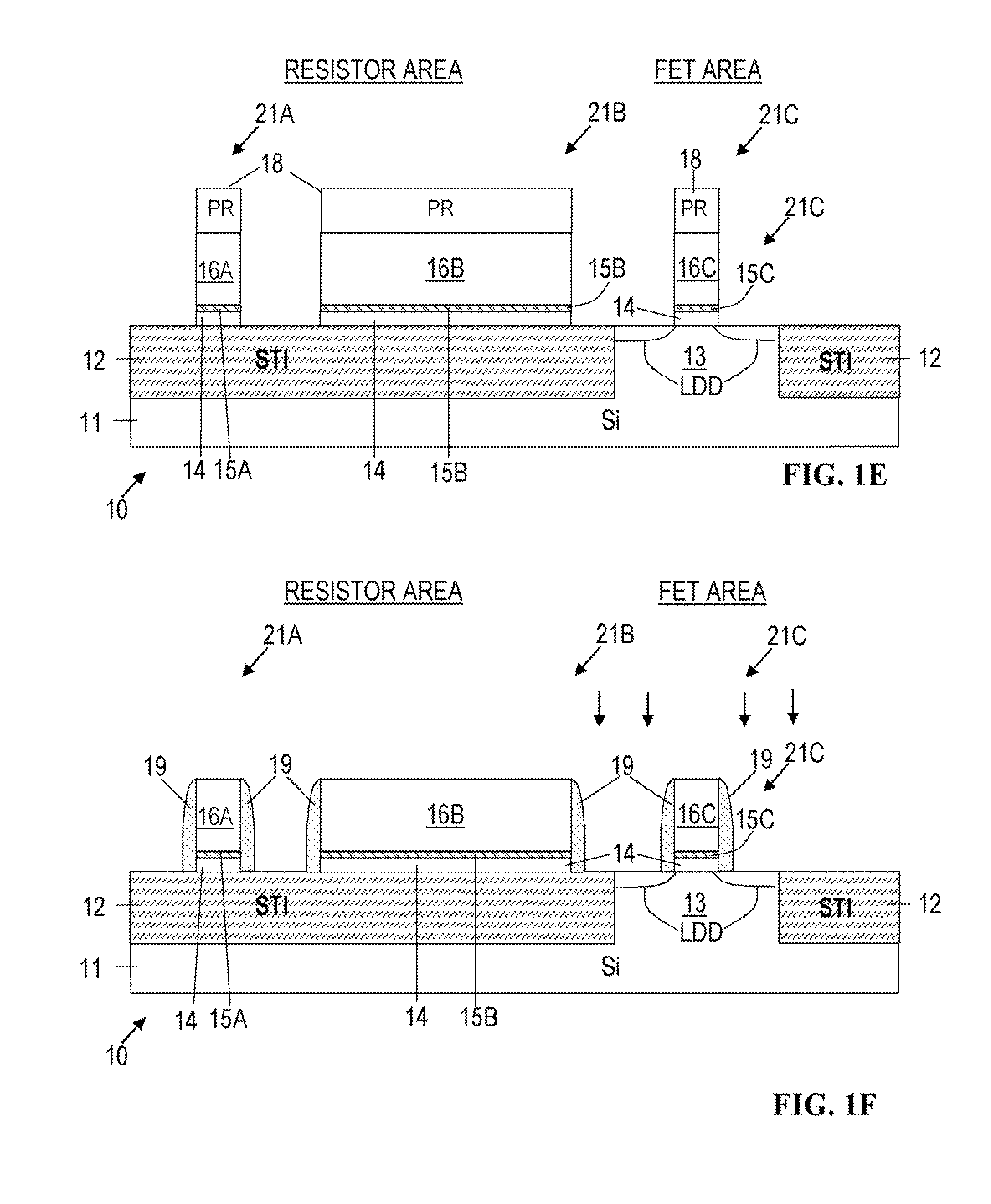Resistor and fet formed from the metal portion of a mosfet metal gate stack
a metal gate stack and resistor technology, applied in the field of polysilicon resistor fabrication, can solve the problems of reducing the time propagation delay rc of the gate, and reducing the effective gate capacitance of the metal insulator semiconductor device, etc., to achieve excellent resistor tolerance and no additional cost
- Summary
- Abstract
- Description
- Claims
- Application Information
AI Technical Summary
Benefits of technology
Problems solved by technology
Method used
Image
Examples
Embodiment Construction
[0026]Step A
[0027]FIG. 1A shows a device 10 in an early stage of manufacture with a silicon semiconductor substrate 11. The substrate 11 may comprise a Silicon-On-Insulator (SOI) substrate or other known substrates which can support fabrication of integrated circuits. Between the STI regions 12 a source / drain / channel region 13 is defined in the silicon substrate 11. In order to produce the device 10 of FIG. 1A, a set of well known conventional processing steps employed in the early stages of fabrication of Complementary Metal Insulator Semiconductor (CMIS) Field Effect Transistor (FET) devices are performed including formation of a pair of Shallow Trench Isolation (STI) regions 12, formation of N wells and P wells, threshold adjustment implantation, all of which steps are well known by those skilled in the art.
[0028]A blanket insulator layer 14 has been thermally grown or deposited, over the surface of The device 10. Alternatively, any combination of these materials may be formed as...
PUM
 Login to View More
Login to View More Abstract
Description
Claims
Application Information
 Login to View More
Login to View More - R&D
- Intellectual Property
- Life Sciences
- Materials
- Tech Scout
- Unparalleled Data Quality
- Higher Quality Content
- 60% Fewer Hallucinations
Browse by: Latest US Patents, China's latest patents, Technical Efficacy Thesaurus, Application Domain, Technology Topic, Popular Technical Reports.
© 2025 PatSnap. All rights reserved.Legal|Privacy policy|Modern Slavery Act Transparency Statement|Sitemap|About US| Contact US: help@patsnap.com



